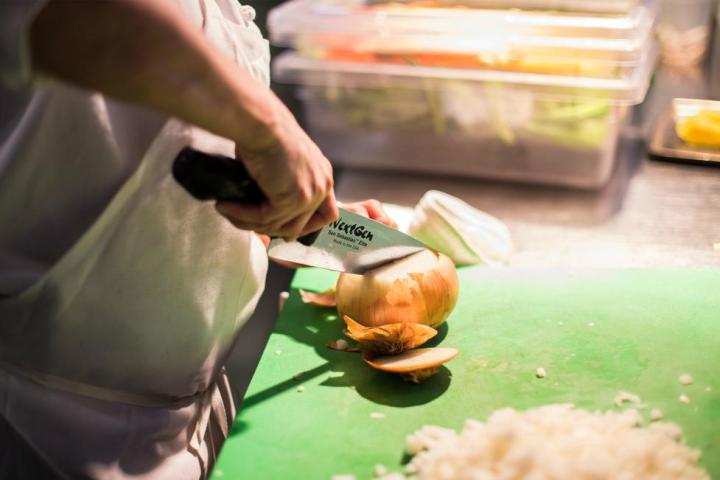

NextGen didn’t just decide to design and mass produce a new line of knives. Instead, they leveraged advancements in metallurgy, chemistry, and 3D-printing technology to develop cutlery that is fitted for chefs. Here’s how they did it. NextGen spent the last year studying the way people hold their knives. (Yes, a year is a long time to watch people cut food.) Then they implemented laser scan data to create an ergonomic design and, finally, took on the 3D-printing component. NextGen also partnered with knife-steel manufacturer Carpenter Technology Corporation to create a metal that is corrosion-resistant, hard but flexible, and sharpens easily.
How do you get your own 3D-printed custom knife? NextGen just launched a Kickstarter campaign, so you can purchase one of its San Sebastian custom knives for $550. (You can get a non-customized version for $99.) Then you’ll have to scan your cutting hand onto a desktop flatbed scanner and e-mail it to NextGen. They’ll handle the rest.
NextGen is offering a variety of different styles and colors of the San Sebastian knives, as well as a tough, puncture-resistant sack to store it in, since it won’t fit into a traditional knife-holder.


